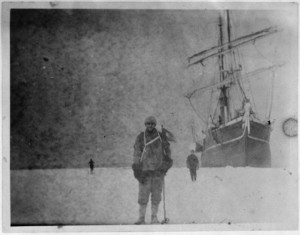
Photographs from a 1914–17 Antarctic expedition were recently discovered. (all images via New Zealand Antarctic Heritage Trust)
Some photographs are best left to be discovered decades after they were first exposed. Much like the work of Vivian Maier — whose images were found years after she said her goodbyes — a recent finding of 22 undeveloped cellulose nitrate negatives from a 1914–17 Antarctic expedition reignites our wonder at the opportunity to glimpse a past thought lost.
This set of photographs captures Ross Island, McMurdo Sound, and Alexander Stevens, the expedition’s chief scientist. Ten men from that expedition, which was part of Ernest Shackleton’s 1914-1917 Ross Sea party, were stranded on the icy continent for nearly two years after their ship, the SY Aurora, broke loose during a gale and drifted out to sea. Three men would die, including the party’s photographer Arnold Patrick Spencer-Smith.
These are images from an era that is fondly referred to as that of “heroic exploration.” There was only minimal damage to the edges of the photographs, and conservators were thus able to perform a nearly complete restoration (the partially mould-covered photographs had been found blocked together). New Zealand Antarctic Heritage Trust executive director Nigel Watson said in a press release:
“It’s the first example that I’m aware of, of undeveloped negatives from a century ago from the Antarctic heroic era. There’s a paucity of images from that expedition.”
Read the full post on Hyperallergic: http://hyperallergic.com/100866/100-year-old-photographs-of-doomed-expedition-discovered-in-antarctica/



